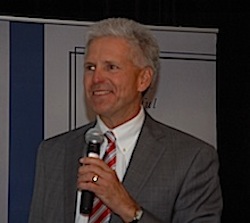Flint Hills Resources Renewables has announced it will expand its use of Edeniq’s Cellunator technology. The company said the technology achieved the desired increase in ethanol production at its Fairbank, Iowa facility and will install Cellunators at two additional locations. Flint Hills has been an investor in Edeniq since April 2012 and a customer since July 2011.
 “Edeniq’s Cellunators have met our expectations at our Fairbank plant and we’re looking forward to expanding the applications to two of our other locations,” said Jeremy Bezdek, Managing Director of Innovation for Flint Hills Resources. “Edeniq technologies have helped improve our competitive position in the marketplace.”
“Edeniq’s Cellunators have met our expectations at our Fairbank plant and we’re looking forward to expanding the applications to two of our other locations,” said Jeremy Bezdek, Managing Director of Innovation for Flint Hills Resources. “Edeniq technologies have helped improve our competitive position in the marketplace.”
According to Edeniq their technology enables ethanol plants to mill corn and other plant materials into a well-mixed slurry of small, uniformly-sized feedstock that can be more easily converted into sugars needed to produce biofuels and other biomaterials.
“Edeniq’s relationship with Flint Hills is an example of how our team is working side by side with our customers to ensure our technology solutions increase their ethanol yields, lower costs, and maintain a competitive position with their production capacity,” said Brian Thome, President and CEO of Edeniq. “Our work with Flint Hills demonstrates our commitment to providing a substantial return on investment for our customers.”










